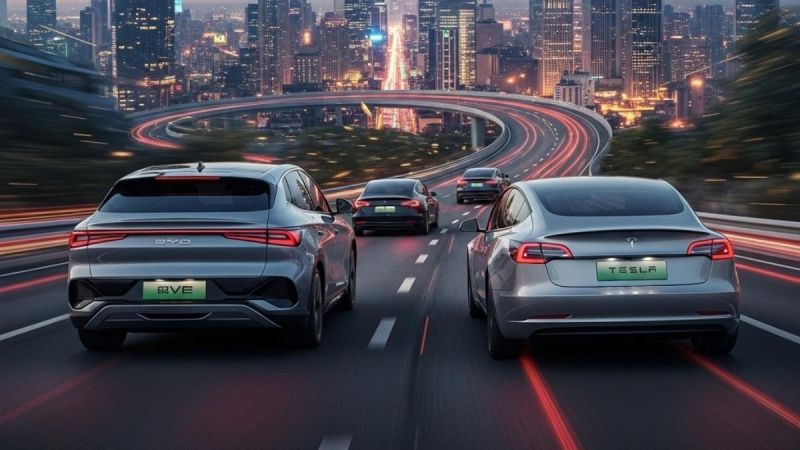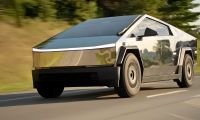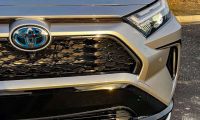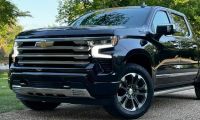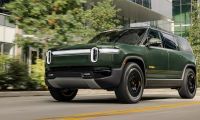The electric vehicle landscape, once seemingly the sole domain of Tesla, has witnessed a seismic shift. For the first time, Chinese automotive giant BYD has reportedly outsold Elon Musk's pioneering company in terms of overall electric vehicle sales. This landmark event marks not just a change in leadership but a significant inflection point in the global EV race. To understand the implications and the potential trajectories of these two titans, we must trace their journeys and forecast the road ahead.
A Tale of Two Paths: Tesla and BYD (2010-2025)
- 2010-2015: Tesla's Trailblazing Ascent: Tesla, founded in 2003, spent its early years carving a niche in the premium EV market with the Roadster and then the groundbreaking Model S. By the early 2010s, Tesla was synonymous with electric innovation, capturing the imagination with its sleek designs, impressive range, and burgeoning Supercharger network. While facing production challenges, Tesla established itself as the aspirational EV brand, laying the groundwork for mass adoption.
- 2010-2015: BYD's Quiet Revolution: BYD, initially a battery manufacturer, had been quietly developing its electric vehicle arm since the mid-2000s. While its early models were primarily focused on the domestic Chinese market and often catered to a more mainstream, budget-conscious consumer, BYD was steadily building scale and expertise in battery technology – a crucial advantage it would later leverage.
- 2016-2020: Tesla's Mass Market Push: With the introduction of the more affordable Model 3, Tesla began its push into the mass market, experiencing exponential growth in sales and solidifying its global leadership in the EV sector. The Model Y further amplified this success, capitalizing on the booming demand for electric SUVs.
- 2016-2020: BYD's Domestic Dominance and Global Ambitions: While Tesla gained international traction, BYD continued to solidify its position as the dominant EV player in China, the world's largest automotive market. Backed by government support and leveraging its battery technology prowess, BYD offered a diverse range of electric vehicles, including buses and commercial vehicles, establishing a comprehensive EV ecosystem. Towards the end of this period, BYD began to express more explicit global ambitions.
- 2021-2025: The Overtaking: The early years of this decade witnessed a confluence of factors that paved the way for BYD's ascendancy. Tesla faced production constraints, increasing competition from established automakers entering the EV space, and a growing appetite for more affordable electric options globally. BYD, with its mature supply chain, cost advantages, and a diverse portfolio catering to various price points, capitalized on this shift. By mid-2025, reports indicated that BYD had, for the first time, surpassed Tesla in overall EV sales in Europe, a symbolic moment marking a new era in the electric vehicle race.
The Next Five Years: Forecasting the EV Landscape (2025-2030)
Predicting the future is always fraught with uncertainty, but based on current trajectories, both Tesla and BYD are poised for massive growth in the next five years. The global demand for electric vehicles is expected to continue its exponential rise, driven by environmental concerns, government regulations, and technological advancements.
- Tesla's Market Share (2030): Tesla will likely remain a dominant force, particularly in the premium EV segment. Its brand loyalty, Supercharger network, and advancements in software and autonomous driving technology. will continue to attract a significant customer base. However, its overall market share may be more distributed as competition intensifies. A reasonable estimate could see Tesla holding a substantial but not absolute lead, perhaps capturing 15-20% of the global EV market.
- BYD's Market Share (2030): Leveraging its strong position in the massive Chinese market, its cost advantages, and its expanding global footprint, BYD is projected to be a formidable leader. Its diverse portfolio and focus on affordability will likely resonate with a broader range of consumers worldwide. A conservative estimate could see BYD commanding 20-25% or even more of the global EV market by 2030.
Maintaining the Crown and Reclaiming It
For BYD to maintain its lead, several factors will be crucial:
- Continued Cost Leadership: Maintaining its advantage in battery technology and manufacturing costs will be paramount in appealing to a wider audience.
- Global Expansion: Aggressively expanding its presence beyond China and establishing strong footholds in key markets like Europe, Southeast Asia, and potentially even North America (navigating trade barriers) will be vital.
- Brand Building: Strengthening its brand image and recognition in international markets will be crucial to attract consumers who may be less familiar with the BYD name.
- Innovation: Continuously investing in research and development to stay ahead in battery technology, vehicle performance, and smart features will be essential.
For Tesla to reclaim the top spot, it needs to address several key areas:
- Increased Affordability: Introducing more competitively priced models to appeal to a broader range of consumers beyond the premium segment is crucial.
- Diversified Product Portfolio: Expanding its lineup to include more diverse vehicle types, such as more affordable SUVs and potentially even entry-level EVs, could attract a wider customer base.
- Manufacturing Efficiency and Cost Reduction: Streamlining its production processes and reducing manufacturing costs will be essential to compete on price.
- Addressing Brand Perception: Navigating brand perception issues and ensuring consistent quality and customer service will be vital for maintaining and growing its customer base.
- Innovation Beyond Software: While Tesla excels in software and charging infrastructure, continued innovation in battery technology and vehicle design will be crucial to maintain its edge.
Wrapping Up: A Two-Horse Race with a Global Stampede
The overtaking of Tesla by BYD marks a significant moment in the electric vehicle revolution, signaling a shift in global leadership and highlighting the importance of affordability and market diversification. The next five years promise an intense two-horse race between these titans, albeit within an increasingly crowded field of ambitious global automakers. BYD's ability to maintain its lead will hinge on its cost and global expansion, while Tesla's path back to the top likely lies in increased affordability and a broader product portfolio. The ultimate winners, however, will likely be consumers who will benefit from increased competition, greater choice, and accelerating innovation in the electric vehicles that will shape the future of transportation.
Disclosure: Image Source Gemini
Rob Enderle is a technology analyst at Torque News who covers automotive technology and battery developments. You can learn more about Rob on Wikipedia and follow his articles on Forbes, X, and LinkedIn.



